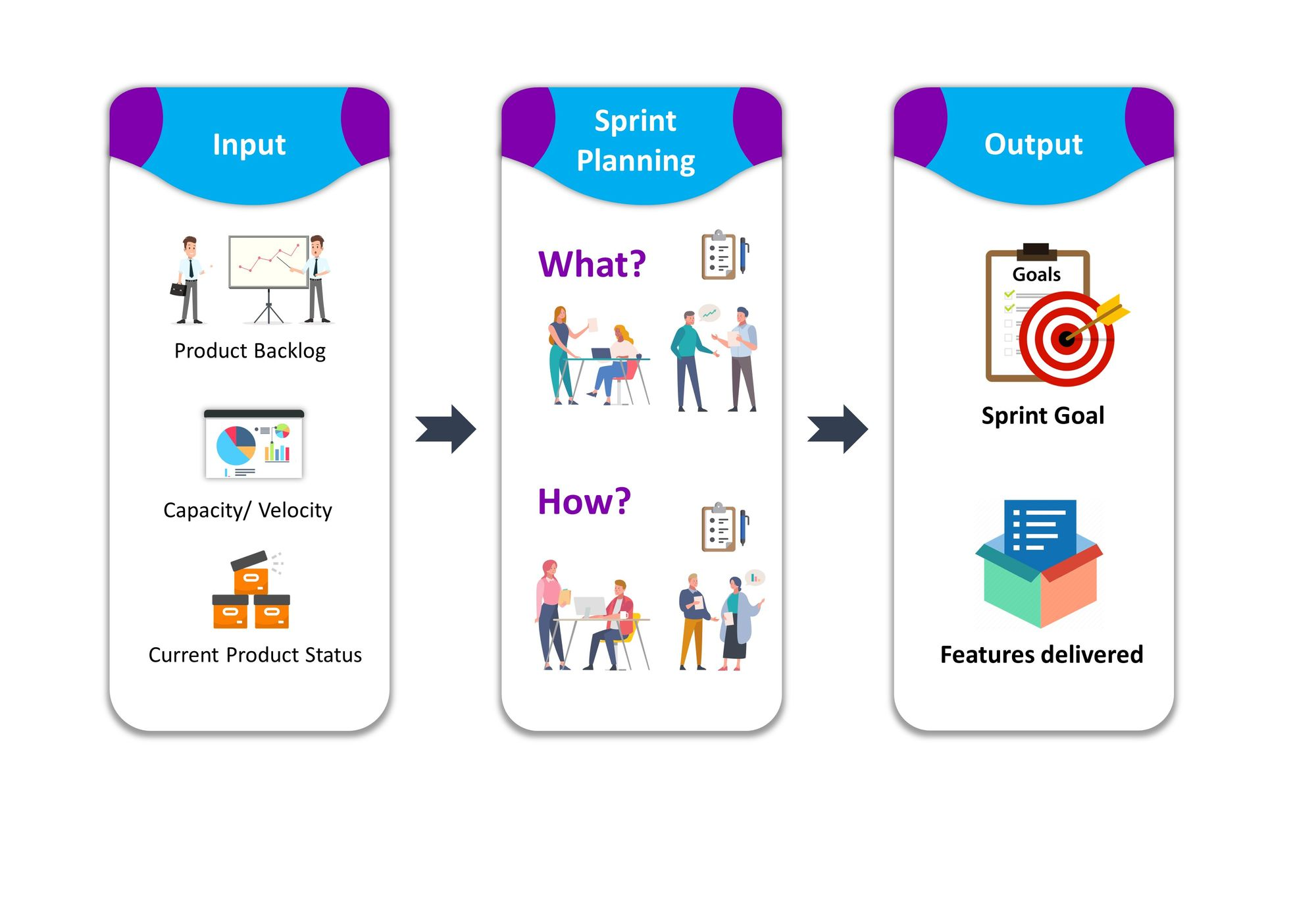Agile Iteration Planning
What is Iteration Planning?
Iteration Planning is a collaborative meeting where the Agile team decides which tasks or user stories from the backlog they can commit to completing in the upcoming iteration (usually 1-4 weeks). The goal is to ensure everyone understands the work ahead and agrees on the objectives for the iteration.
Example: Imagine a team at SLSI Corp preparing for their next two-week sprint. They gather to review the backlog, discuss priorities, and select the tasks they believe they can complete, considering their past performance and current capacity.

Who Attends the Iteration Planning Meeting?
The Iteration Planning meeting typically includes:
- Product Owner: Presents the prioritized backlog and clarifies any questions.
- Scrum Master: Facilitates the meeting, ensuring it stays on track.
- Development Team: Discusses and commits to the work they can complete.
- Stakeholders: May be invited for specific insights or clarifications.
Example: At SLSI Corp, the Product Owner explains the top-priority features, the Scrum Master keeps the discussion focused, and the development team assesses what they can realistically achieve in the next sprint.
Prerequisites Before Planning:
Before the Iteration Planning meeting, certain preparations are essential:
- Backlog Refinement: Ensure that the backlog items are well-defined and prioritized.
- Estimation: Assign story points or other estimation metrics to backlog items.
- Capacity Planning: Understand team members' availability for the upcoming iteration.
- Acceptance Criteria: Define clear criteria for when a task is considered complete.
Example: The SLSI Corp team reviews their backlog ahead of the meeting, estimates the effort required for each task, and notes any upcoming vacations or other commitments that might affect their capacity.
The Planning Process:
The Iteration Planning process involves several key steps:
1. Calculating Velocity
Velocity is a measure of the amount of work a team can handle during an iteration, based on past performance. It helps in predicting how much work the team can commit to in future iterations.
Example: If SLSI Corp completed 30 story points in the last sprint, they might aim for a similar number in the upcoming sprint, adjusting for any changes in team capacity.
2. Determining Task Capacity
Task capacity considers the total available hours the team has for the iteration, factoring in meetings, vacations, and other commitments. This ensures the team doesn't overcommit.
Example: With 5 team members working 8 hours a day over a 10-day sprint, SLSI Corp has a total capacity of 400 hours. They subtract time for meetings and other duties to determine how many hours are available for actual task work.
3. Story Analysis and Estimation
Each user story is analyzed for complexity, dependencies, and risks. The team discusses and assigns estimates, often using techniques like Planning Poker or T-Shirt Sizing.
Example: SLSI Corp evaluates a new login feature, considering factors like security requirements and integration with existing systems, and estimates it at 5 story points.
4. Tasking Stories
After estimating, stories are broken down into specific tasks. Each task is assigned to a team member, ensuring clarity on responsibilities and timelines.
Example: The login feature at SLSI Corp is divided into tasks: designing the UI, implementing backend authentication, and writing tests. Each task is assigned to the appropriate team member.
5. Planning Steps
- Product Owner Presents: Shares the top-priority items.
- Team Discusses: Breaks down items into tasks and estimates effort.
- Assign Tasks: Based on capacity and expertise.
- Set Goals: Define what success looks like for the iteration.
- Review and Adjust: Ensure the plan is realistic and adjust as needed.
Example: In their planning meeting, SLSI Corp follows these steps to ensure everyone is aligned and the sprint goals are achievable.
6. Finalizing the Plan
At the end of the Iteration Planning meeting, the team should have:
- A Clear Sprint Backlog: List of tasks to be completed.
- Defined Goals: What the team aims to achieve.
- Commitment: Agreement from all team members on the plan.
Example: SLSI Corp concludes their meeting with a shared understanding of the tasks ahead, clear goals, and a commitment from each team member to deliver their part.
